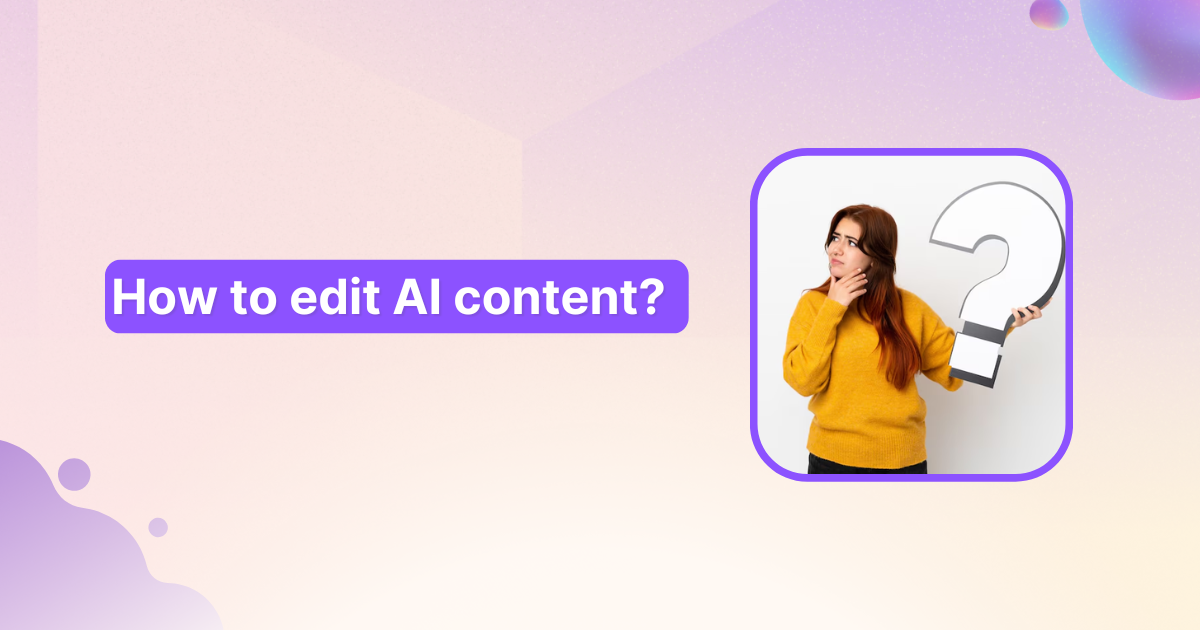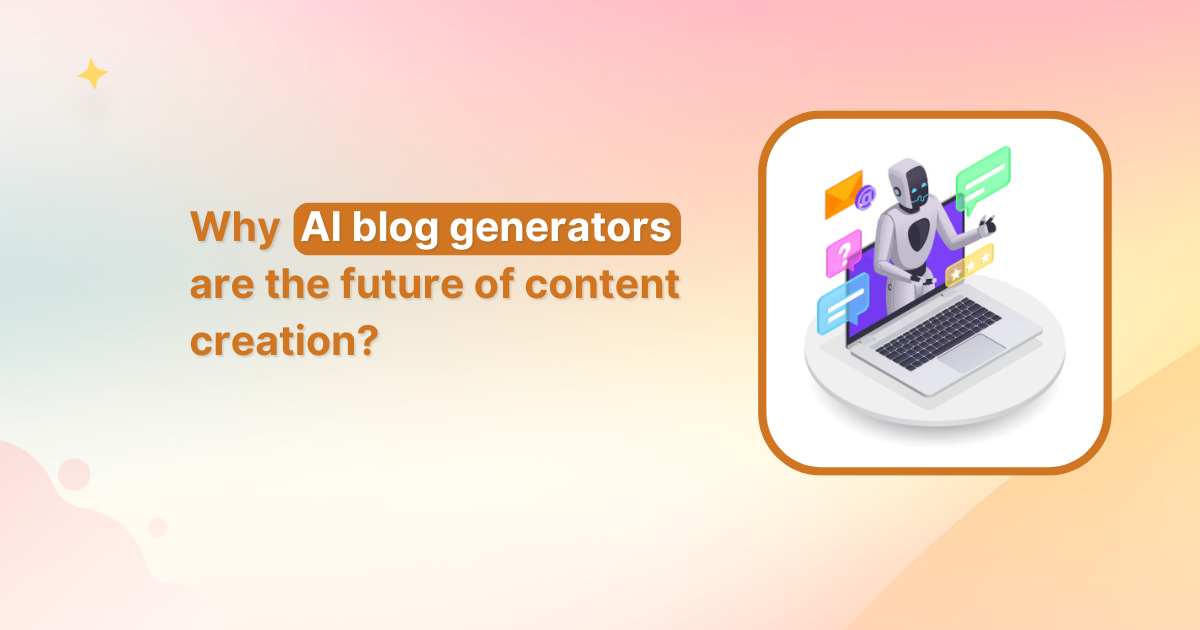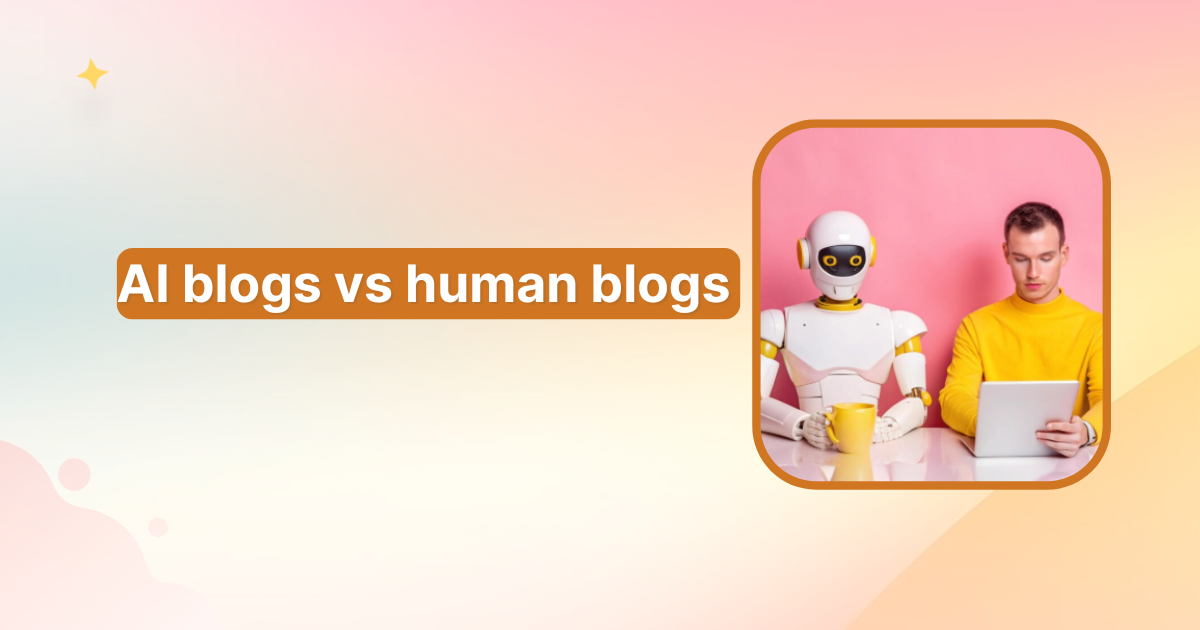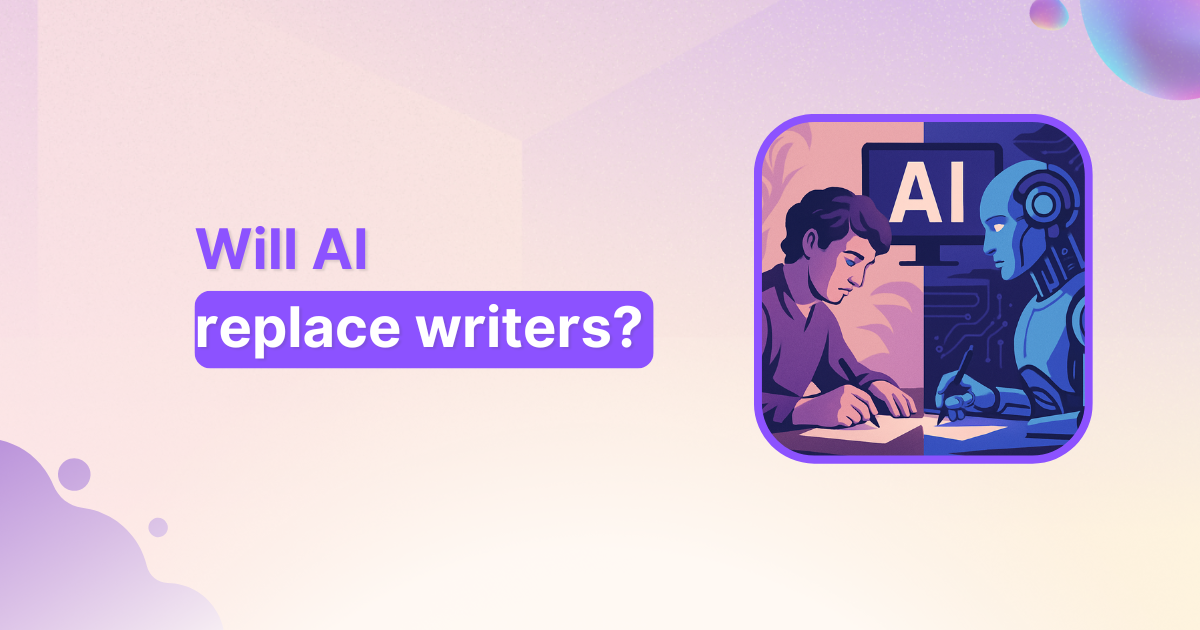How to edit AI content: From raw output to polished publication

AI is changing how we create content, but it still needs a human touch. What used to be 100% human is now a mix of brains and bots. AI writing tools aren’t just fixing typos anymore; they’re pumping out full blogs, social posts, and even sales pages with barely any input.
But here’s the thing: AI still can’t quite nail the human feel. It misses the spark, the flow, the little things that make writing sound real. That’s why editing is still key. Most AI-generated content needs a solid polish before it’s ready for an actual audience.
Creators today are trying to do more in less time – using AI to get ahead without losing that personal touch. That’s where Contentpen comes in. It’s built to help you clean up robotic drafts and turn them into content that feels natural, engaging, and totally you. With tools made for modern editors, Contentpen makes it easy to combine AI speed with human creativity.
Read more: How to use AI to write blog posts?
Understanding AI content: Strengths and weaknesses
- Common characteristics of raw AI output: AI content often follows a logical structure and includes relevant info but feels emotionally flat. It may lack authenticity, storytelling, and the unexpected insights that make content engaging.
- Typical patterns and limitations to watch for: AI excels at summarizing but struggles with creativity and unique perspectives. Repetition of words, phrases, and ideas is common, especially in longer pieces.
Bonus tip: Keep a “repetition log” while editing to track common phrases the AI repeats.
- Different AI models produce different types of content: General models like GPT-4 produce rich content but may invent details.
Niche tools are more consistent but less flexible in tone and creativity. - The importance of prompt engineering: Clear, specific prompts help generate higher-quality drafts from the start. Spending time on prompt design saves significant editing time later.
What is the best way to edit AI content?
There are two main ways to edit AI content:
You can go the manual route, reviewing everything from scratch and refining tone, structure, and accuracy. While effective, this approach can be time-consuming, especially if you’re handling large volumes of content.
Or, you can use a smarter method with tools built for this purpose, like Contentpen. This advanced platform is designed to help you turn raw AI output into polished, engaging, and SEO-optimized content faster and more efficiently.
Contentpen: Your AI content editing solution
- Maintain a consistent brand voice
Contentpen’s brand intelligence system analyzes your existing content to understand your unique tone and style. It then applies those insights to every new piece, keeping your messaging consistent across the board.
- Generate quality AI content
With its specialized multi-agent architecture, Contentpen produces content that is up to 5,000 words in both creative and technically sound. Each AI agent handles a different writing task, ensuring your final output reads naturally and resonates with your audience.
- Built-in SEO optimization engine
Contentpen doesn’t just write – it ranks. Its SEO tools include:
- Smart keyword research and integration
- Optimized titles and meta descriptions
- Header tag structuring
- Internal and external linking suggestions
Everything is designed to help your content perform better on search engines.
- Smart content structuring
With customizable templates and layout tools, Contentpen helps you:
- Build clear outlines
- Maintain logical flow
- Apply correct formatting and hierarchy
It ensures every piece is easy to read and well-organized from start to finish.
- Real-time team collaboration
From live editing to approval workflows, Contentpen’s collaboration hub simplifies teamwork. Key features include:
- Multi-brand workspace management
- Role-based access controls
- Content approval pipelines
It’s built for agencies, marketing teams, and content departments.
- Automated quality control
Before publishing, Contentpen runs your content through a smart QA system that checks for:
- Readability
- Brand consistency
- Factual accuracy
- Updated statistics
This ensures that everything meets high standards before going live.
Leveraging the SEO agent
Contentpen’s SEO Agent helps transform basic AI content into search-optimized material:
- Keyword integration: It intelligently incorporates target keywords at optimal density without compromising readability
- Structure optimization: Reorganizes content with proper headings, subheadings, and formatting for better SERP performance
- Meta data generation: Creates compelling meta titles and descriptions that improve click-through rates
- Content gap analysis: Identifies missing topics that competitors are covering to ensure comprehensive content
Using the ask AI agent for content optimization
The Ask AI Agent feature provides on-demand editing assistance:
- Simply upload or paste your AI-generated content
- Ask specific questions like “How can I make this introduction more engaging?” or “Optimize this for my target keyword: YouTube community tab”
- Receive tailored suggestions and edits that you can implement with a single click.
By combining these powerful tools, Contentpen streamlines the editing process, helping you transform raw AI output into high-quality content that resonates with readers and search engines.
06 Essential steps for editing AI content
1. Structural assessment
Evaluating the logical flow and organization
The foundation of effective editing begins with evaluating the logical flow and organization of your AI-generated draft. Unlike human writers who might naturally build toward key points, AI sometimes produces content with uneven development or illogical progressions.
Start by examining how ideas connect from paragraph to paragraph. Are there abrupt shifts in topic? Does the content build logically toward its conclusion? AI often excels at creating structured outlines but may struggle with smooth transitions between major sections.
Identifying gaps in reasoning or missing transitions
Identifying gaps in reasoning is particularly important when editing AI content. Because AI models work by predicting likely text sequences rather than reasoning from first principles, they sometimes make logical leaps that leave readers confused. Look for assertions without sufficient support or conclusions that don’t follow from the presented evidence.
Action step: Create a “reverse outline” of your AI draft by writing a one-sentence summary of each paragraph. This helps identify logical gaps and areas where transitions are needed.
Reorganizing sections for improved reader experience
When reorganizing, focus on creating a compelling narrative arc, even for informational content. Consider moving stronger points earlier to capture the reader’s interest, grouping related ideas together, and ensuring that the piece builds toward meaningful conclusions or actionable insights.
2. Fact-checking and verification
Spotting potential inaccuracies or hallucinations
The most critical aspect of editing AI content is rigorous fact-checking. While AI models contain vast information, they can confidently present inaccurate or outdated facts, particularly about specialized topics or recent events.
When reviewing AI-generated content, approach facts with healthy skepticism. Be particularly wary of:
- Specific statistics and numerical data
- Dates and timelines
- Product specifications or features
- Attributions of quotes or ideas to specific individuals
- Claims about recent events or emerging research
These elements are commonly misrepresented in AI output and require verification.
Research methods for quick verification
Develop efficient research methods for quick verification. Start with a general search to confirm basic facts, then consult authoritative sources for specialized information. For academic or professional content, original research papers, official company documentation, and primary sources should be your go-to references.
Adding proper citations and references
Adding proper citations not only addresses accuracy concerns but also enhances the credibility of your content. Even when writing for general audiences, linking to reputable sources for key claims demonstrates thoroughness and builds reader trust.
Anti-hallucination checklist:
- Flag all specific claims, statistics, and quotes
- Verify each flagged item against at least one reliable source
- Consider removing unverifiable claims or clearly marking them as speculative
- Add citations for important facts, even in informal content
Tools that can help streamline the verification process
Several tools can streamline the verification process. Browser extensions that fact-check in real-time, specialized research databases, and Contentpen’s built-in reference manager help editors maintain accuracy without sacrificing efficiency. Contentpen also flags potentially problematic statements requiring additional verification, saving editors valuable time during the review process.
Read-up: ChatGPT alternatives
3. Voice and tone refinement
One of the most recognizable characteristics of unedited AI content is its somewhat generic, mechanical tone. While technically correct, AI writing often lacks the personality and distinctive voice that helps content stand out in today’s crowded digital landscape.
Begin the refinement process by identifying and eliminating robotic language patterns. Watch for overused transitions like “furthermore” or “moreover,” unnecessarily formal constructions, and repetitive sentence structures. Replace generic descriptions with more specific, evocative language.
Adapting content to your brand’s unique voice requires intentional editing. Consider your brand personality – is it conversational and friendly? Authoritative and professional? Witty and irreverent? Make targeted adjustments to vocabulary, sentence length, and stylistic elements to align with this established voice.
Adding personality doesn’t mean simply inserting casual language or exclamation points. Instead, focus on incorporating an authentic perspective through thoughtful analysis, relevant personal or industry examples, and genuine enthusiasm for the subject matter. Contentpen offers voice and tone settings that can help guide these refinements, suggesting alternatives that better match your desired style.
4. Content enhancement
AI-generated drafts often provide a solid foundation but lack the depth and richness that truly valuable content offers. Human editors add significant value by identifying and expanding underdeveloped points.
Look for opportunities to incorporate concrete examples that illustrate abstract concepts. Where AI might state a general principle, add a real-world scenario that shows that principle in action. These examples make content more relatable and help readers apply information to their situations.
Adding relevant context and nuance is another crucial enhancement. AI models may present information without acknowledging different perspectives, limitations, or special cases. Human editors can identify these gaps & address them, creating more balanced and thoughtful content.
5. Technical optimization
Creating valuable content for readers while also ensuring it performs well technically requires thoughtful optimization. SEO considerations should guide editing decisions without compromising readability or value.
Start by researching relevant keywords using ContentPen’s integrated keyword research tool. Look beyond primary keywords to identify related terms, questions, and phrases that your audience is searching for. Incorporate these naturally throughout the content, paying special attention to headings, subheadings, and the first few paragraphs.
Readability improvements serve both human readers and search engines. Break down complex sentences, use shorter paragraphs, and incorporate bulleted or numbered lists where appropriate. Contentpen’s readability analysis identifies potential issues and suggests specific improvements to enhance clarity.
Headlines and subheadings deserve particular attention as they guide both readers and search engines through your content. Revise AI-generated headings to include relevant keywords while making them more compelling and specific. Ensure they accurately reflect the content that follows and create curiosity that encourages continued reading.
6. Final polishing
Grammar and spelling verification
The final editing stage transforms good content into great content through meticulous attention to detail. While AI-generated content is generally grammatically correct, subtle issues often remain.
Use a combination of automated grammar checking and human review to catch lingering errors. Pay particular attention to:
- Commonly confused words (their/there/they’re, affect/effect)
- Subject-verb agreement in complex sentences
- Proper noun capitalization
- Passive voice overuse
- Unnecessarily complex language
These are areas where AI models occasionally stumble.
Consistency checks for terminology and style
Consistency checks are essential for maintaining professionalism. Verify that terminology, formatting, capitalization, and numerical styles remain consistent throughout. For example, decide whether you’ll spell out numbers or use digits, and apply that convention consistently. ContentPen’s consistency checker flags potential inconsistencies for quick resolution.
Editor’s checklist for consistency:
- Industry-specific terms and acronyms
- Hyphenation and capitalization of key terms
- Formatting of dates, times, and numbers
- Usage of Oxford comma (or not)
- Header formatting and hierarchical structure
Formatting for visual appeal and readability
Visual formatting significantly impacts how readers engage with your content. Break up text with appropriate subheadings, pull quotes, and visual elements. Ensure proper spacing, consistent font usage, and clear hierarchical structure through heading levels. These visual cues guide readers through your content and highlight key information.
Final proofreading techniques
Before publishing, conduct a final proofreading pass using a perspective different from your initial editing. Reading content aloud, reviewing it on a different device, or using ContentPen’s text-to-speech feature can help identify issues that might otherwise go unnoticed. This fresh perspective often catches awkward phrasing, missing words, or logical inconsistencies that previous reviews missed.
Pro tip: Create a personal “error pattern” log. After editing several AI-generated pieces, you’ll notice the AI tends to make certain types of errors repeatedly. Keeping track of these patterns will speed up your editing process over time.
Balancing automation and human judgment
The most effective workflows balance content automation and human judgment. Use tools like Contentpen to automate repetitive tasks like checking grammar, identifying potentially problematic statements, and assessing readability. This automation frees up your attention for aspects that require human creativity and judgment, such as refining voice, enhancing narratives, and adding unique insights.
Time-saving techniques for regular content producers
For regular content producers, several time-saving techniques can streamline the editing process:
- Create templates for common content types with predefined structures and style guidelines
- Develop a library of brand-specific phrases, transitions, and examples that you can quickly insert when refining AI-generated text
- Schedule dedicated editing blocks rather than constantly switching between creation and editing modes
- Build a swipe file of excellent human-written content in your niche to reference for inspiration
- Create a database of verified facts and statistics that can be quickly referenced.
Also read: How to write blogs faster?
Conclusion
As AI tools advance, distinctly human contributions like creativity, emotional intelligence, ethical judgment, and contextual understanding become even more valuable, with editors who cultivate these qualities remaining essential in an AI-saturated landscape.
Contentpen exemplifies this collaborative future, offering AI-powered assistance while emphasizing the irreplaceable role of human judgment. By combining technological efficiency with human insight, today’s editors can produce content that performs well technically and forms meaningful connections with audiences.
“In the AI era, everyone can be a writer, but not everyone will be an editor. The ability to transform raw AI output into truly valuable content separates mediocre content from exceptional content.”
FAQ’s on AI content
How do I edit AI-generated content for a more human feel?
AI content often lacks emotional depth and personal touch. To polish it, focus on refining the tone, adding unique perspectives, and enhancing storytelling. Tools like Contentpen help by combining AI’s speed with human creativity.
What are the common limitations of AI-generated content?
AI content tends to be logically structured but emotionally flat. It may repeat phrases, lack creativity, or miss unique insights. Editing is crucial to make it engaging, authentic, and SEO-optimized.
How can I ensure my AI content maintains my brand’s voice?
Use Contentpen’s brand intelligence system to maintain consistency. It analyzes your existing content and applies your unique style to new pieces, ensuring all content stays true to your brand.
What tools can help with editing AI content efficiently?
Contentpen is designed to streamline the editing process. It offers real-time collaboration, automated quality control, and SEO optimization, making it easier to refine and publish high-quality AI-generated content.
You might be interested in...

Why AI blog generators are the future of content creation?
AI blog generators have certainly brought a tectonic shift in how content is created, optimized, and published. These tools are a step forward from general LLMs like ChatGPT and are having an impact on the future of content writing. Businesses, content creators, and blog writers get unmatched opportunities to scale content with AI while maintaining […]
Jul 21, 2025

AI blogs vs human blogs: Which creates better content in 2025?
The debate between AI blogs vs human blogs has reached a tipping point. With AI tools for content creation becoming more popular and advanced, businesses are questioning whether they should stick with human writers or embrace artificial intelligence for their content strategy. Studies indicate that 88% of marketers are already relying on AI to handle […]
Jul 14, 2025

Will AI replace writers? The truth behind the hype
The digital landscape is buzzing with excitement and anxiety about AI writing tools. From Contentpen’s intelligent content generation to ChatGPT’s conversational prowess and Jasper’s marketing copy expertise, artificial intelligence has stormed into the writing world with impressive capabilities. This technological leap forward has sparked a burning question that keeps writers awake at night: Will AI […]
Jun 19, 2025